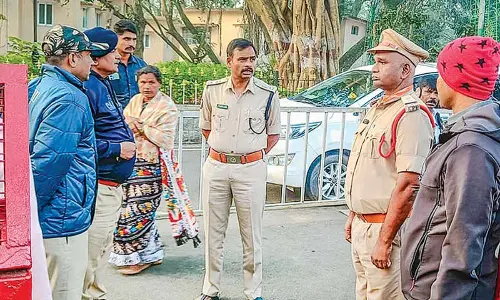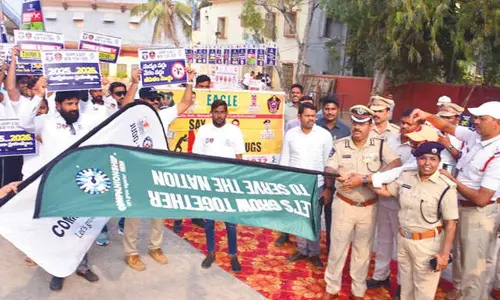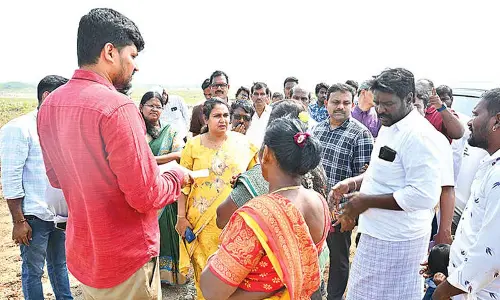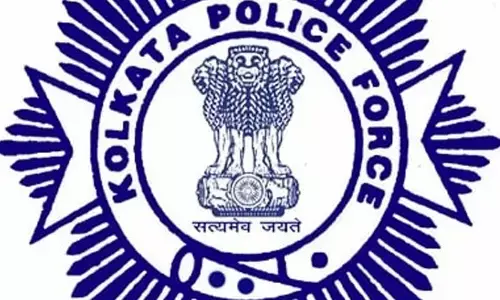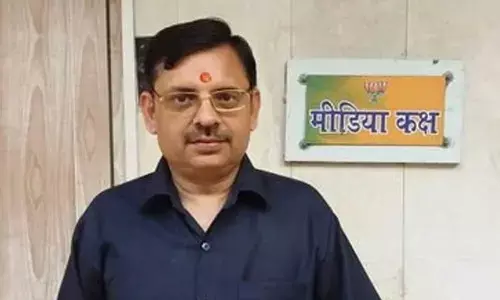Future of water deficit States?

Future of Water Deficit States?, Principle of Equal Apportionment, Green Revolution, KS Chalam. Andhra farmers are the most productive and translated the Government of India Green Revolution into a reality and are contributing to the national pool of food stock to accomplish the Right to Food security.
Andhra farmers are the most productive and translated the Government of India Green Revolution into a reality and are contributing to the national pool of food stock to accomplish the Right to Food security. Is this the way a State that comes to the rescue of the government being treated in the allocation of water? Why the guidelines that mention factors like drought, population, irrigation needs, drainage etc did not come to the rescue of Andhra Pradesh? What happened to the “Principle of Equal Apportionment”?
The Telugu people are drawn into an added anxiety in the form of Brijesh Kumar Tribunal award on Krishna River water. This is not the first time nor would it ever resolve the problems of our State in future given the nature of the issue. The interstate agreements on Krishna started during the British Raj in 1892 and repeated in 1933, 1944 and 1946 due to the geographical expanse of the river.
Krishna and Godavari are the biggest rivers in Peninsular India having almost the same length of 1401 kms and 1465 kms respectively. Krishna originates in Western Ghats, slinks 15 per cent of its length in Maharashtra, 23 per cent in Karnataka and rest 62 per cent in Andhra Pradesh.
Keeping the interstate demands and controversies, the government of India has appointed the Krishna Water Tribunal in 1969 using the Interstate Water Disputes Act 1956. Interestingly, rivers come under Central list (56) and the maintenance of irrigation and canals, water supplies etc under State list (17). Given the Federal structure in India is different from USA or Australia due to historical and structural reasons; Centre entangles to redress disputes between States through the process of Tribunal Awards.
Water is a precious resource for sustenance of life. Once it was considered as free good is now reduced as the scarcest thing and therefore a commodity with all the economic characteristics. Out of the 2.7 per cent of fresh water on earth, 75 per cent is frozen in the polars and limited quantity is available on surface through run off. Though North India has the bounty of perennial Ganga, Brahmaputra, Indus etc originating in the Himalayas, South is not so blessed (may be Vastudosham!).
Tamilnadu and Andhra Pradesh are considered as water deficit as they are on the receiving end of the river systems. The interstate disputes led the Central Government to establish five river water tribunals. Interestingly, out of five, two are for Andhra Pradesh. As we are preoccupied with the Coastal Andhra and Krishna and Godavari so intensely, we are not even aware of the fact that Vamsadhara Tribunal was not provided with an office space and expediently ignored North Andhra farmers.
The KWDT I and II consisting of Bachawat and Brizesh Kumar verdicts are discussed in detail in different fora and facts are known to many. Award II has considered 65 per cent dependability and arrived at 2578 tmc for distribution with 16 tmc to flow down Prakasam Barrage as environmental flow till 2050. We have chosen scheme A and seem to have not touched scheme B. We are definitely deprived of the legitimate share in the water given the principles or methods adopted to arrive at the formula of sharing. As 80 per cent of the rivers in India are interstate and we have committed a blunder in allowing Visakhapatnam district to be bifurcated in 1936 (as part of Odisha), we have very few sources of fresh water.
Critics do also mention how we are indiscriminately used our water and in a short period of time swallowed 27 tmc of fresh water in Kolleru Lake, the largest in South East Asia. However, Telugu people are proud of being the providers of food to the entire East in the form of rice and fish. We are also proud of our farmers who are progressive and scientific in their approach to adopt to modern techniques and methods of cultivation particularly in areas where irrigation water is assured.
The utilisation of water for agriculture can be assessed in terms of Net Irrigated area in Net Sown area. The data with the Ministry of Water Resources show that we have 40.73 per cent coverage while our neighbours Karnataka 25.4 per cent and Maharashtra 16.78.
After 2001 Karnataka and Maharashtrahave planned 16 and 56 major projects respectively. The highest irrigated states are Punjab and Haryana with 84 per cent, Bihar, UP, Bengal in the Gangetic plane 50-70 per cent. Among the South Indian States, Tamilnadu with 54 per cent stands first. Between the deficit states, Andhra farmers are the most productive and translated the Government of India Green Revolution into a reality and are contributing to the national pool of food stock to accomplish the Right to Food security.
Is this the way a State that comes to the rescue of the government being treated in the allocation of water? Why the guidelines that mention factors like drought, population, irrigation needs, drainage etc did not come to the rescue of Andhra Pradesh? What happened to the “Principle of Equal Apportionment”?
Interstate disputes on distribution of water is not unique to India, USA has similar problems.
In this context, we may cite the Supreme Court of USA ruling that, ‘in exercise of an informed judgment, factors like, physical conditions, climate, the use of water, the character and rate of return flow, the extent of established uses, the availability of storage of water and the practical effects of wasteful use are considered’.
It can also be based on:
1 States can divide water by the amount of flow each State contributes. For example, if A contributes 60 per cent of flow, it gets 60 per cent. But if it occupies 60 per cent area and contributes to 30 per cent, a compromise is needed.
2 Based on historical claims such as “prior assertion” of using say 60 per cent water. 3 Dividing on the basis of priority uses like drinking, municipal, fisheries etc. Some Economists suggest that it is possible to standardise for every use to arrive at “water foot print” (value of) and leave it to the market to decide the flow.
This is an extreme step seems to have been tried by World Bank experts with precarious results. This method is not useful in a country like ours where we have several discontents and disconnects making market redundant or fragmented.
Andhra Pradesh, a deficit state, should argue that inadequacy is not a concern of Coastal Andhra; it is a national issue as it would adversely affect the national pool of food grains. There are already 125 bilateral agreements on water. The State Government can initiate a dialogue with Karnataka to get release of water on time from our share to meet farming operations and the same amount of water seized later in a staggered manner. We may also redesign our agricultural strategies including ground water use in delta, cropping pattern and other alternatives while fighting for our Right to Water. Andhra is blessed with 950kms of coast to make use of reverse osmosis and other non-conventional sources to meet the challenges of deficit. Is it not reasonable to ask for compensation to reward the forgone share of our water?
Next Story









